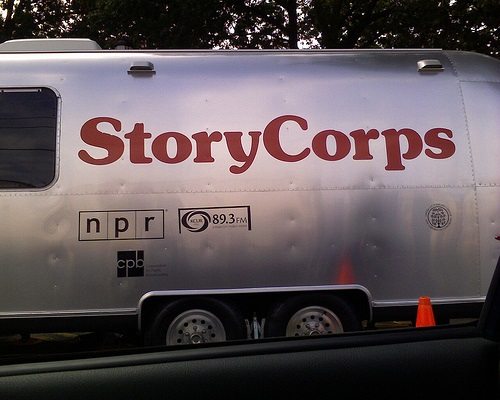
October 23, 2013; New York Times, “City Room”
Ten years. 55,000 interviews. 90,000 participants. One mission: telling our stories.
The storytelling started in a sparse booth in Grand Central Terminal, New York and grew to a nationwide initiative of ordinary people telling their personal stories. StoryCorps is a nonprofit organization dedicated to providing “people of all backgrounds and beliefs with the opportunity to record, share, and preserve the stories of our lives.” Many StoryCorps recordings have been broadcasted nationally on NPR’s Morning Edition and are available on the organization’s website. These stories of everyday people are also preserved in perpetuity at the American Folklife Center at the Library of Congress. It has become one of the largest oral history projects of our times.
Sign up for our free newsletters
Subscribe to NPQ's newsletters to have our top stories delivered directly to your inbox.
By signing up, you agree to our privacy policy and terms of use, and to receive messages from NPQ and our partners.
As StoryCorps turns 10 this year, it gives us an opportunity to reflect on the value of storytelling. In recent years, storytelling has become a trending topic in nonprofit management. Nonprofits are encouraged by consultants and fundraising experts to tell the stories of clients, volunteers, and donors. Despite initial concerns about confidentiality, many nonprofits find that clients often want to tell their stories. Storytelling can be a way for clients to give back to the organization and, as StoryCorps clearly understands, storytelling is a healing activity in and of itself.
For example, the New York Times reports, “There is the homeless woman who was so moved by her [StoryCorps] recording, calling it the most important thing she’d ever done in her life, that she tried to donate her food stamps to the staff members as her voluntary donation.”
Donors and volunteers, too, have their stories. Some, of course, will want to remain anonymous. However, others will be glad to share their stories. These stories are often used in publicity and fundraising materials as way to engage other donors and volunteers. But donor storytelling also has a deeper purpose. As StoryCorps writes, “We do this to remind one another of our shared humanity, strengthen and build the connections between people, teach the value of listening, and weave into the fabric of our culture the understanding that every life matters.”
Nonprofit social service organizations spend a lot time and energy trying to solve problems. While this is vital and often life-saving work, it also important to recognize another role nonprofits can play in society: the sacred role of witness to another person’s story.—Jennifer Amanda Jones











